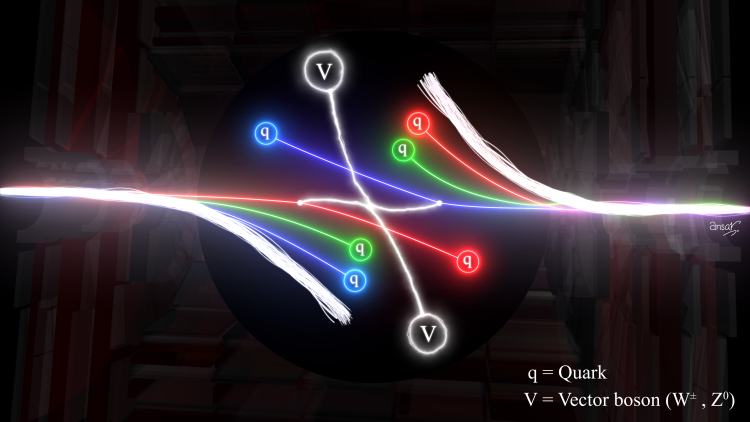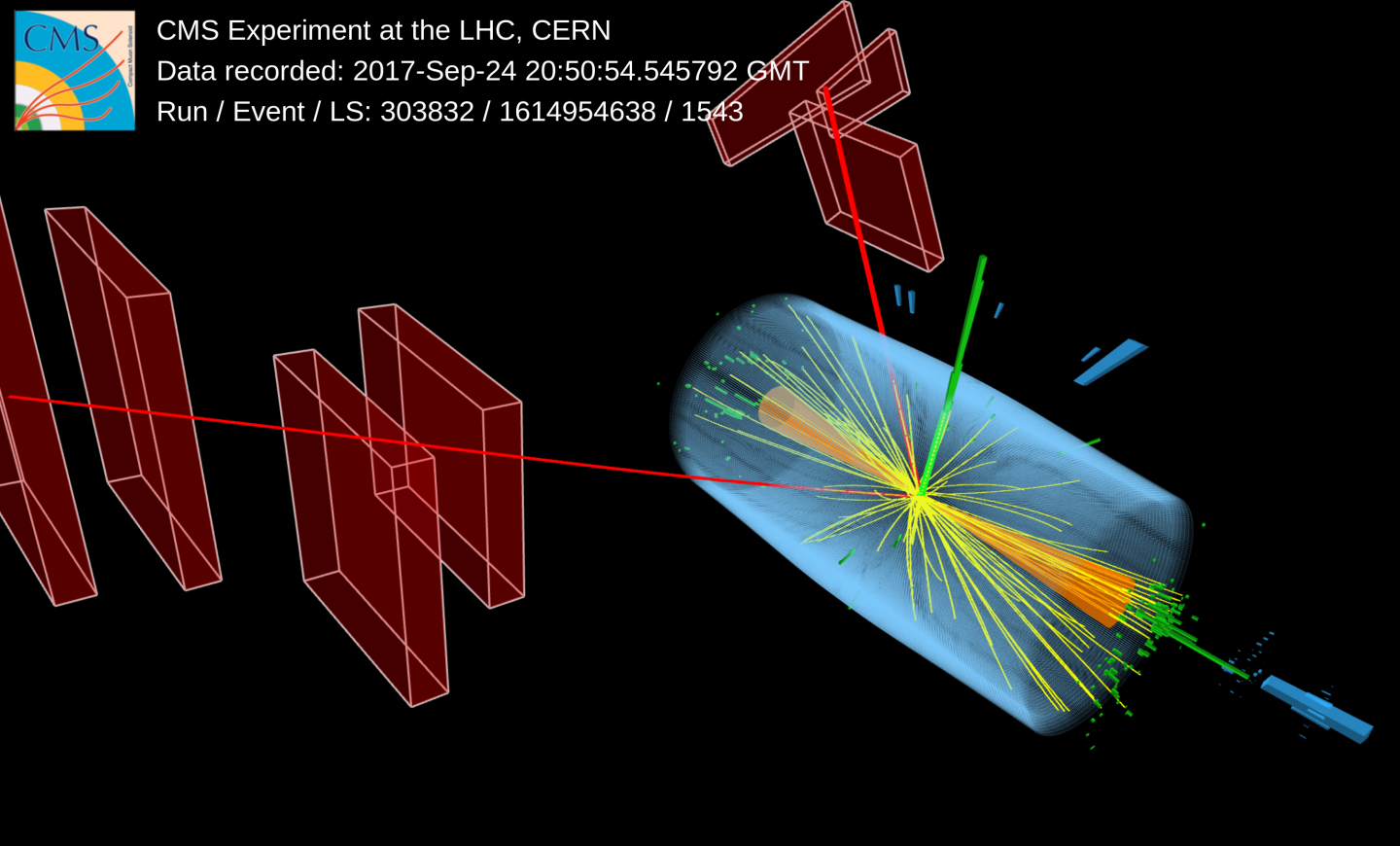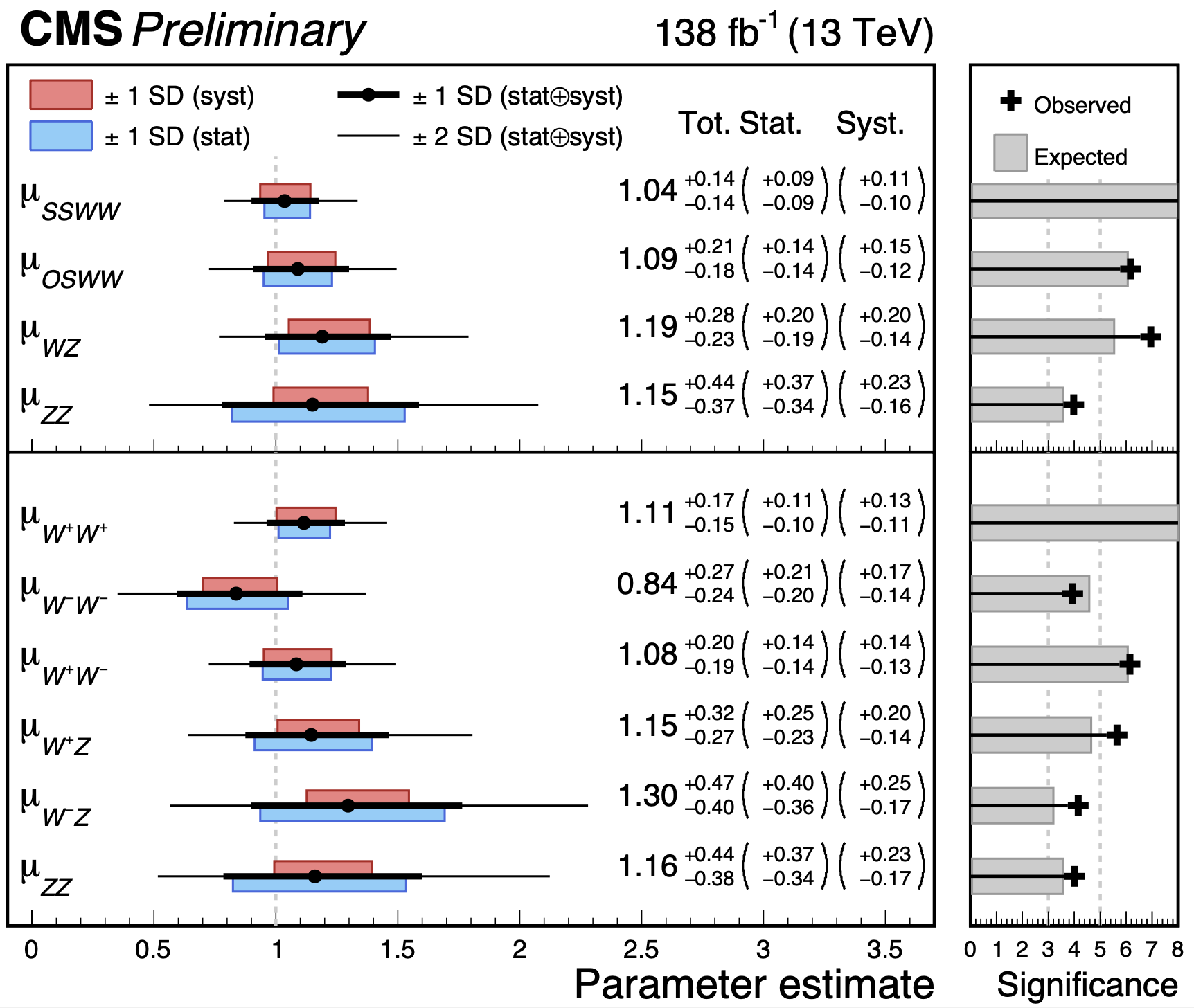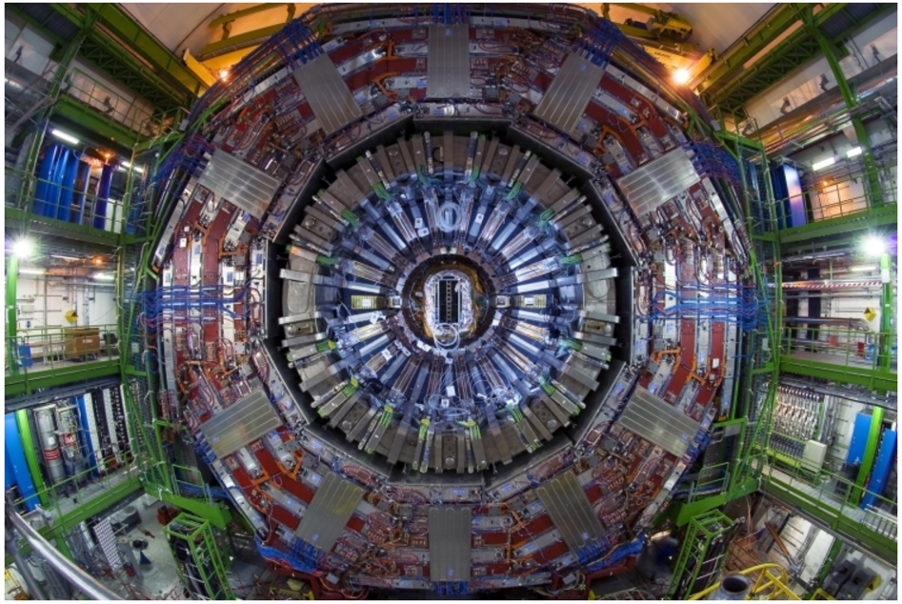
The CMS experiment performs a combined measurement of the scattering of W and Z bosons in the several possible final states, improving over the precision of each individual result.
When the Large Hadron Collider started taking data in 2008, the scientific community was ready to exploit its vast physics potential to the maximum, regardless of whether the long-predicted Higgs boson would be discovered – as it actually happened in 2012 – or not. A comprehensive physics exploration campaign was devised, ranging from searches for new particles and phenomena, to extremely precise measurements of abundant and rare processes.
Among these, right from the beginning, the scattering of W and Z bosons – collectively called vector bosons – held a special role. Characterised by the collision of two vector bosons generated in proton-proton collisions, vector boson scattering (VBS) provides the ultimate litmus test of the Higgs mechanism and offers a point of view on the properties of the Higgs boson that is complementary to results from direct Higgs boson production measurements.
The CMS experiment has studied vector boson scattering in all possible final states. In the detector, one may observe several combinations of W and Z bosons, and each of them may decay into leptons or quarks. Since the vector bosons have to be produced in proton-proton collisions, though, the process is among the less probable ones at the LHC: in fact the case with two W bosons with the same electrical charge is among the rarest processes ever measured at the LHC.
Fortunately, in this case, the quarks that accompany the vector bosons remain in the active region of the CMS detector, and together, quarks and vector bosons determine a unique signature that we exploit to identify such events and keep random noise under control. The image represented in the figure below shows the display of a typical vector boson scattering event.

Above: An event recorded by the CMS detector in 2017, which shows the signature of vector boson scattering with a W boson and a Z boson in the final state. The two orange cones stemming from the collision point are the so called "tag jets", formed by quarks that emitted the vector bosons; the green tower is due to the energy of an electron originated from a W boson decay that stopped in the electromagnetic calorimeter, and the two red tracks detected by the muon detectors are produced by the disintegration of a Z boson.
Starting from all the studies performed, the CMS Collaboration summarised them in a joint result, placing them in a coherent landscape to get the overall picture, with a careful statistical combination of their significances and uncertainties. Different final states contribute to the overall sensitivity, thanks to the merger of the results obtained with vector bosons decaying in different manners. Correlations are properly taken into account, for example when events of one category may be confused for another one.
This general picture will serve as a starting point to look for deviations from the current theory expectation, searching for an explanation of the several mysteries that still evade our understanding. The figure below shows the first step in this direction: here, the intensity of the vector boson scattering with two W bosons, two Z bosons, or a W and a Z boson is allowed to vary with a scale factor μ. Should the data favour our current description of Nature, these scale factors would be close to 1, while in the presence of possible new phenomena, e.g. if the Higgs mechanism did not work as predicted, significant deviations should be observed. The measurement is repeated while allowing different W boson charge configurations to vary independently. This approach provides a direct test of charge production asymmetry in proton-proton collisions.

Above: Results of the vector boson scattering combined measurement, all of which are consistent with the predictions of the standard model.
The current results on vector boson scattering are still dominated by the size of the collected data. In the future, the LHC will deliver an order of magnitude more luminosity with respect to what has already been looked at, and the CMS experiment will be ready to check in all corners for new physics effects.
Written by: Giacomo Boldrini, for the CMS Collaboration
Edited by: Muhammad Ansar Iqbal
Read more about these results:
-
CMS Physics Analysis Summary (SMP-24-013): "Combination of vector boson scattering measurements with fully- and semi-leptonic final states in proton-proton collisions at 13 TeV"
-
Display of collision events: CERN CDS
-
@CMSExperiment on social media: Bluesky - Facebook - Instagram - LinkedIn - TikTok - Twitter/X - YouTube

